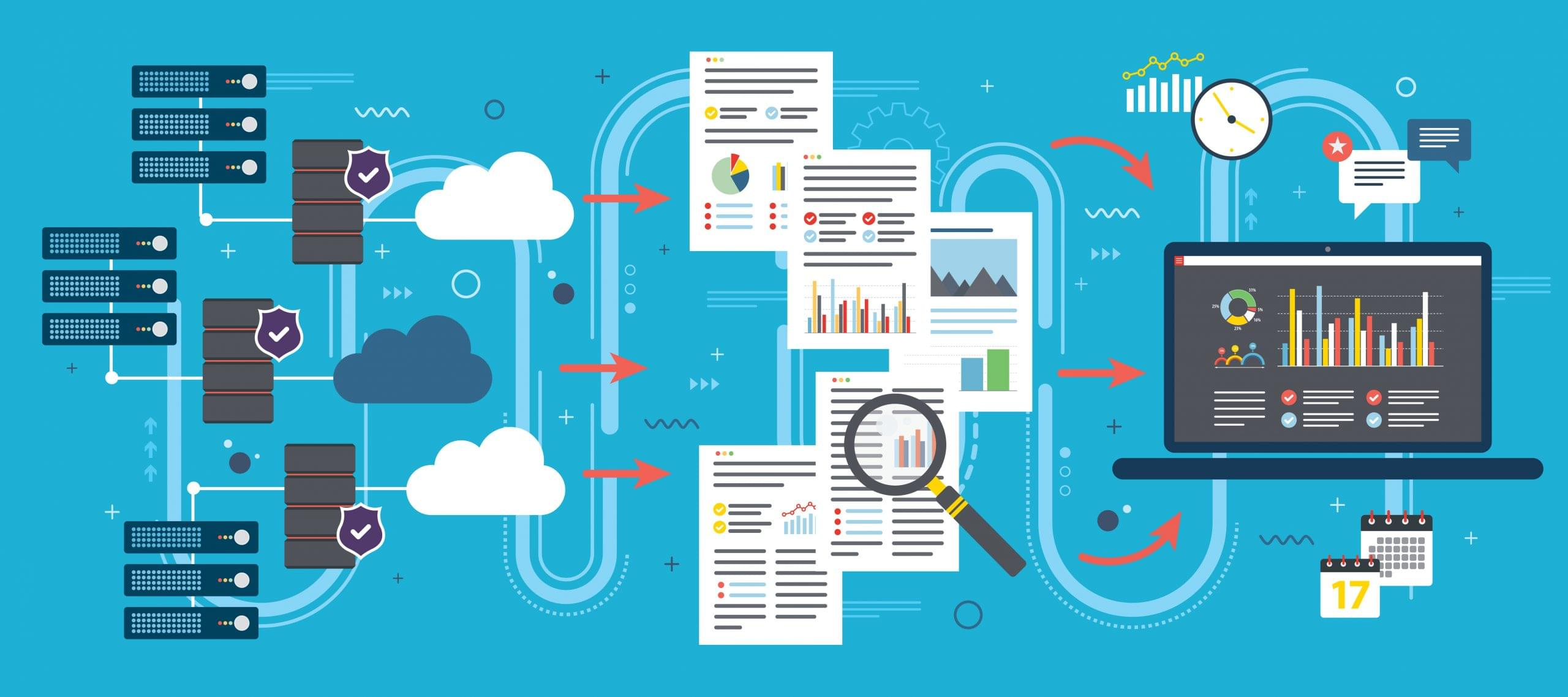16 min to read

The ability to collect, analyze, and interpret information is critical. Navigating information collection is akin to steering a ship through ever-changing waters. As businesses strive to stay competitive and relevant, effective information gathering becomes a linchpin for informed decision-making. This article delves into the intricacies of this process, offering insights into the nuances of data collection, the importance of ethical considerations, and the role of cutting-edge technologies in shaping the future of business intelligence.
The Art and Science of Data Collection
Data collection is both an art and a science, requiring a delicate balance between precision and creativity. It begins with defining clear objectives – understanding what information is crucial for business goals. Once the parameters are set, businesses must choose the right methodologies to gather data efficiently. Surveys, interviews, observations, and analyzing existing databases are among the many approaches available. However, the artistry lies in crafting questions that extract meaningful insights, and the science is in the meticulous execution of these methods. Additionally, the rise of big data has revolutionized information gathering, offering immense datasets that can be harnessed through advanced analytics for a deeper understanding of market trends, customer behavior, and internal operations.

Data collection embodies a complex interplay of precision and creativity, representing both an art and a science in its approach. It initiates with the establishment of unequivocal objectives, a foundational step that determines the essence of information pivotal for the attainment of business ambitions. This initial phase is crucial as it lays down the parameters for formulating and executing data collection strategies.
The selection of appropriate methodologies for data acquisition is a critical decision point for businesses. This choice encompasses diverse techniques such as surveys, interviews, observations, and the analysis of pre-existing databases. Each method offers unique advantages and poses distinct challenges, making their strategic selection essential for effective data collection. For instance, surveys and interviews can provide direct insights into customer perceptions and preferences, while observations and existing database analyses offer empirical evidence of behaviors and trends.
However, the true artistry in data collection emerges in the design of the data-gathering instruments. Crafting questions that are not only clear and unbiased but also capable of eliciting deep insights is a skill that combines creativity with analytical precision. This aspect of data collection demands a nuanced understanding of human psychology and communication alongside a robust grasp of the scientific principles underpinning effective research methodologies.
The advent of big data has further expanded the horizons of data collection, introducing a paradigm shift in how information is gathered and utilised. Big data encompasses vast datasets that, when analyzed through advanced analytical techniques, unveil patterns, trends, and associations at a scale previously unimaginable. This revolution has significantly enhanced the ability of businesses to understand market dynamics, consumer behavior, and even the intricacies of their own operational processes. The Codedesign team, with its extensive experience in leveraging advanced digital marketing solutions, underscores the importance of integrating programmatic media, Data Management Platforms (DMPs), and Demand-Side Platforms (DSPs) to navigate the complexities of big data effectively. By harnessing these technologies, businesses can tap into sophisticated data pools, enabling a more granular and nuanced digital ecosystem analysis.
Furthermore, the application of advanced analytics facilitates the transformation of raw data into actionable insights. This process involves the aggregation and analysis of data and its interpretation within the context of the business’s strategic objectives. The Codedesign team, through its expertise in advanced analytics, empowers businesses to navigate the vast data landscapes, extracting relevant insights that drive strategic decision-making.
For a top digital marketing agency, for example, the ability to analyze consumer data from various digital touchpoints provides a comprehensive view of the customer journey. This analysis enables marketers to tailor their strategies more effectively, enhancing customer engagement and optimizing the return on investment. A concrete example of this approach can be found in targeted advertising campaigns, where data collected from DMPs and analyzed through DSPs allows for the delivery of personalized advertisements to specific segments of the audience, significantly increasing conversion rates.

Ethical Considerations in Information Collection
On the pursuit of data-driven insights, businesses must not overlook the ethical dimensions of information collection. The era of 'big data' has brought forth concerns about privacy, consent, and the responsible use of information. As organizations amass vast amounts of data, a critical consideration is ensuring that data collection methods adhere to ethical standards. Transparency in communication with stakeholders, obtaining informed consent, and safeguarding sensitive information are essential pillars of ethical data collection. Companies that prioritize ethical considerations not only build trust with their customers and partners but also mitigate the risks associated with legal and reputational ramifications. In an era where data breaches make headlines, navigating the ethical landscape of information collection is not just a moral imperative but a strategic necessity.
For data-driven decision-making, the ethical considerations surrounding information collection demand meticulous attention. The advent of 'big data' has ushered in a new era marked by heightened concerns over privacy, consent, and the conscientious handling of data. As organizations aggregate extensive datasets, the imperative to uphold ethical norms in data collection becomes paramount.
The foundation of ethical information collection is built on the principles of transparency, informed consent, and the protection of sensitive data. Transparency entails clear communication with all stakeholders about the nature of the data being collected, the purposes for which it will be used, and the methods employed in its collection and analysis. This openness is crucial in fostering trust and ensuring that all parties understand the scope and intent of data collection activities.
Informed consent represents another cornerstone of ethical data practices. It involves securing explicit permission from individuals before collecting their data, ensuring they are fully aware of what they consent to. This process must articulate the specifics of the data collection, including the types of data gathered, how it will be stored used, and who will have access to it. Obtaining informed consent is not merely a legal formality but a fundamental ethical obligation that respects individual autonomy and choice.
Protecting sensitive information is equally critical in ethical data collection and handling. Organizations must implement robust security measures to safeguard personal and sensitive data against breaches and unauthorized access. This commitment to data security protects individuals' privacy and reinforces the trust placed in an organization by its customers, employees, and partners.
Prioritizing ethical considerations in data collection transcends moral obligation; it is a strategic imperative. In an era where data breaches frequently dominate headlines, the reputational and legal risks associated with unethical data practices can have far-reaching consequences. Companies that embed ethical principles into their data collection strategies navigate these risks more effectively and build deeper trust with their stakeholders.
Codedesign team, with its expertise in advanced digital marketing solutions and data analytics, recognizes the significance of ethical considerations in data collection. We advocate for the integration of ethical guidelines in the deployment of programmatic media, Data Management Platforms (DMPs), and Demand-Side Platforms (DSPs). By adhering to ethical standards, businesses can ensure that their data collection methods are legally compliant and align with broader societal values.
Furthermore, the ethical collection and use of data can serve as a competitive advantage in the marketplace. Consumers are increasingly aware of and concerned about their data privacy. Companies that can demonstrate a commitment to ethical data practices are more likely to engender loyalty and trust among their customers, distinguishing themselves in a crowded and competitive field.

Embracing Technological Innovations for Business Intelligence
The rapid evolution of technology has become a game-changer in the field of information collection. Businesses are increasingly leveraging artificial intelligence (AI) and machine learning (ML) algorithms to sift through vast datasets and extract meaningful patterns. Predictive analytics, sentiment analysis, and natural language processing have empowered businesses to gain insights in real-time, enabling agile decision-making. The integration of Internet of Things (IoT) devices further contributes to data collection by providing a continuous stream of real-world data. However, as businesses embrace these technological advancements, it is crucial to balance the benefits with the potential risks, ensuring that the human touch remains in control. Striking this balance allows organizations to harness the full potential of technological innovations for business intelligence without compromising on ethical standards or the interpretative insights that human intuition provides.
The digital marketing landscape is perpetually evolving, with Demand-Side Platforms (DSPs) at the forefront of this transformation. DSPs streamline the process of purchasing advertising by automating the decision-making process of buying ad inventory in real time, ensuring that advertisers can target their ads more effectively to the right audience, at the right time, and for the right price. Innovations in DSP technology have significantly enhanced their efficiency and effectiveness, contributing to a more dynamic and responsive digital advertising ecosystem. Here are some of the most significant innovations in DSP technology:
Integration of Artificial Intelligence and Machine Learning
One of the most impactful innovations in DSP technology is the integration of Artificial Intelligence (AI) and Machine Learning (ML). These technologies enable DSPs to analyze vast amounts of data in real-time, optimizing bidding strategies, and improving targeting precision. AI and ML algorithms can predict user behavior, assess the value of ad impressions, and automatically adjust bids to maximize the return on investment (ROI) for advertisers. This level of automation and intelligence has vastly improved campaign performance and efficiency.
Advanced Targeting Capabilities
DSPs have evolved to offer more sophisticated targeting options, going beyond basic demographic and geographic criteria. Innovations in targeting technologies include behavioral targeting, contextual targeting, and psychographic targeting, which allow advertisers to reach users based on their online behavior, the content they consume, and their interests and lifestyles, respectively. These advanced targeting capabilities ensure that ads are more relevant to the audience, enhancing engagement and conversion rates.
Cross-Device Tracking and Attribution
With consumers using multiple devices, cross-device tracking and attribution have become crucial for advertisers to understand the customer journey comprehensively. Modern DSPs have developed capabilities to track user behavior across devices, from smartphones to tablets to desktops, allowing for more cohesive and unified advertising strategies. This innovation helps advertisers measure the effectiveness of their campaigns more accurately and allocate their budgets more efficiently.
Real-Time Bidding (RTB) Enhancements
Real-Time Bidding (RTB) technology, the backbone of DSP operations, has seen significant advancements. Innovations in RTB include faster processing times, improved algorithms for bid optimization, and more transparent auction dynamics. These enhancements have led to more efficient marketplaces, where advertisers can bid on ad inventory in milliseconds, ensuring that they can capture the attention of their target audience at the opportune moment.
Enhanced Transparency and Fraud Prevention
Transparency in the digital advertising supply chain has been a growing concern for advertisers. Innovations in DSP technology now offer greater visibility into where ads are placed, the cost of ad inventory, and the performance of ads. Moreover, advancements in fraud detection and prevention mechanisms within DSPs have become more sophisticated, employing AI and ML to identify and block fraudulent activities, thereby protecting advertisers' investments.
Creative Optimisation Tools (This will explode soon!!!)
DSPs now incorporate tools that allow for dynamic creative optimization (DCO). These tools enable advertisers to automatically adjust creative elements of their ads (such as images, messaging, and calls-to-action) in real time based on audience data and engagement metrics. This capability ensures that ads are not only targeted but also visually and contextually tailored to each viewer, increasing the effectiveness of advertising campaigns.
As demonstrated by these advancements, the continuous innovation within DSP technology underscores the dynamic nature of digital advertising. The Codedesign team, with its extensive experience in programmatic media and advanced analytics, is adept at leveraging these innovations to enhance advertising efficiency and effectiveness for their clients. By staying abreast of technological advancements in DSPs, the Codedesign team ensures that businesses can navigate the complex digital marketing landscape successfully. For more insights into how DSP innovations can transform your digital advertising strategy, visit Codedesign.
Streamlining Operations through Lean Six Sigma Consulting
Businesses can gain a competitive edge by incorporating Lean Six Sigma methodologies in the quest for optimal information collection. Lean Six Sigma, a management approach that combines principles from Lean Manufacturing and Six Sigma, focuses on minimizing waste, improving efficiency, and enhancing overall organizational performance. By integrating Lean Six Sigma consulting into the information collection process, businesses can streamline operations and ensure that data is collected efficiently and accurately. This approach involves continuous improvement and rigorous analysis of processes, aiming to eliminate redundancies and errors in data collection workflows. As organizations strive for operational excellence, Lean Six Sigma provides a structured framework that complements traditional data collection strategies, fostering a culture of continuous improvement and efficiency within the business.
Harnessing the Power of Predictive Analytics
In the era of data-driven decision-making, predictive analytics emerges as a powerful tool for businesses seeking a competitive advantage. Predictive analytics involves the use of statistical algorithms and machine learning techniques to identify patterns and forecast future trends. By analyzing historical data, businesses can anticipate customer preferences, market trends, and potential challenges. This proactive approach enables organizations to make informed decisions in real time, ultimately optimizing their strategies for improved outcomes. Integrating predictive analytics into information collection processes empowers businesses to move beyond retrospective analysis, embracing a forward-looking perspective that enhances their ability to adapt and thrive in an ever-evolving market landscape.

Real-Time Insights with Internet of Things (IoT)
The proliferation of Internet of Things (IoT) devices has opened new frontiers in information collection, providing businesses with real-time insights into various aspects of their operations. From supply chain management to customer interactions, IoT devices generate continuous streams of data, offering a dynamic and granular view of business processes. This influx of real-time information enhances decision-making capabilities, allowing organizations to respond swiftly to changing circumstances. Embracing IoT in information collection provides a competitive advantage and lays the foundation for a more agile and responsive business model.
In the contemporary landscape of data-driven strategy, predictive analytics stands out as a transformative resource for businesses aiming to secure a competitive edge. This sophisticated approach employs statistical algorithms and machine learning techniques to decipher patterns within historical data, facilitating the projection of future trends, customer behaviors, and market dynamics. The essence of predictive analytics lies in its capacity to anticipate forthcoming opportunities and challenges, thereby empowering businesses with the foresight to make strategically informed decisions.
The Strategic Value of Predictive Analytics
The integration of predictive analytics into business operations transcends traditional reactive methods, offering a proactive stance towards decision-making. This shift from retrospective analysis to a predictive approach is instrumental in refining business strategies, enhancing operational efficiencies, and elevating customer experiences. By leveraging historical data to forecast future occurrences, organizations can tailor their offerings to meet anticipated customer needs, adjust to evolving market conditions, and preempt potential obstacles. This forward-looking perspective is invaluable in an increasingly volatile and competitive business environment, where agility and responsiveness are key determinants of success.
Enhancing Customer Engagement and Satisfaction
One of the most significant applications of predictive analytics is in the realm of customer relationship management. By analyzing data on past consumer behavior, businesses can predict future purchasing patterns, identify cross-selling and up-selling opportunities, and personalize marketing efforts to align with individual customer preferences. This level of personalization not only improves customer engagement but also drives loyalty and retention, contributing to long-term business growth.
Optimizing Operations and Reducing Risks
Predictive analytics also plays a crucial role in operational optimization and risk management. For instance, in supply chain management, predictive models can forecast demand fluctuations, enabling companies to adjust inventory levels accordingly and avoid overstocking or stockouts. Similarly, predictive analytics can identify potential fraud patterns in the financial sector, enhancing risk assessment and mitigation strategies. These applications underscore the versatility of predictive analytics in driving operational efficiencies and safeguarding against unforeseen risks.
The Role of Advanced Analytics and Data Pools
The efficacy of predictive analytics is contingent upon the quality and breadth of the data available. In this context, the integration of advanced analytics and the utilisation of comprehensive data pools become paramount. Advanced analytics techniques, such as data mining, big data analytics, and deep learning, enable the extraction of actionable insights from vast and complex datasets. Meanwhile, the aggregation of data from diverse sources into cohesive data pools enhances the depth and accuracy of predictive models. The Codedesign team, with its expertise in advanced analytics and digital marketing solutions, excels in harnessing these technologies to empower businesses with precise predictive insights.

The Human Element in Data Interpretation
While advanced technologies play a pivotal role in information collection, the human element remains irreplaceable in the interpretation and contextualization of data. Algorithms and analytics tools can process vast datasets and identify patterns, but human intuition and expertise are essential for understanding the nuances that may escape automated analysis. The synergy between technological innovations and human insight creates a robust framework for effective decision-making. As businesses navigate the landscape of information collection, recognizing and valuing the human element in data interpretation ensures that insights are accurate and aligned with the organization's broader strategic goals. Striking the right balance between technology and human expertise is key to unlocking the full potential of information collected for meaningful and impactful decision-making.
Success hinges on a strategic synthesis of diverse methodologies and technologies in the ever-evolving landscape of business information collection. From the art and science of data collection to ethical considerations, the integration of cutting-edge technologies, and the influence of Lean Six Sigma consulting, businesses have an array of tools at their disposal. Predictive analytics and IoT bring real-time insights, while the human element ensures that data is not just collected but comprehensively understood and applied. Navigating this multifaceted terrain requires a holistic approach, where organizations constantly adapt to emerging trends and technologies while upholding ethical standards. As businesses continue to leverage the wealth of information available, the synergy between technological innovation and human expertise will be the driving force behind effective decision-making, fostering growth and resilience in an increasingly competitive marketplace.
FAQS - Frequently Asked Questions
How does big data revolutionize information gathering for businesses?
Big data has fundamentally transformed the landscape of information gathering for businesses by enabling the analysis of vast datasets to uncover patterns, trends, and associations, especially relating to human behavior and interactions. This revolution has allowed companies to gain deeper insights into customer preferences, market trends, and operational efficiencies, leading to more informed decision-making processes. For instance, Codedesign, a leading digital marketing agency, leverages big data to optimize marketing strategies for clients, enhancing targeting precision and campaign effectiveness. By analyzing large sets of data, businesses can predict customer behavior, improve product offerings, and ultimately drive higher ROI. The use of advanced analytics tools and techniques in processing big data ensures that businesses can sift through the noise to find actionable intelligence, making information gathering a strategic asset rather than a mere operational task.
What are the key ethical considerations in data collection and how can businesses address them?
The key ethical considerations in data collection revolve around privacy, consent, transparency, and security. Businesses must ensure that they collect data in a manner that respects individual privacy rights and adheres to legal regulations, such as GDPR in Europe. Obtaining explicit consent from individuals before collecting their data, providing clear information about how the data will be used, and ensuring the security of collected data against breaches are fundamental ethical practices. To address these considerations, businesses can implement robust data governance frameworks that define policies and procedures for ethical data handling. For example, employing data encryption, conducting regular security audits, and adopting a privacy-by-design approach can help safeguard data and build trust with customers. By prioritizing ethical considerations in data collection, businesses not only comply with legal requirements but also enhance their reputation and customer relationships.
How can businesses balance the art and science of data collection to achieve their objectives?
Balancing the art and science of data collection involves integrating quantitative data analysis with qualitative insights to achieve comprehensive business objectives. The scientific aspect focuses on employing statistical methods, algorithms, and machine learning techniques to process and analyze data, which is essential for uncovering patterns and predicting trends. The artistic side, however, emphasizes understanding the context, interpreting nuances, and applying human judgment to data insights. Businesses can achieve this balance by combining big data analytics with customer feedback, market research, and expert opinions to inform decision-making. For instance, while Codedesign uses data analytics to drive digital marketing strategies, it also considers creative content and user experience to engage audiences effectively. This holistic approach ensures that businesses not only make data-driven decisions but also remain adaptable and innovative in meeting their objectives.
In what ways can artificial intelligence and machine learning enhance data collection and analysis?
Artificial intelligence (AI) and machine learning (ML) significantly enhance data collection and analysis by automating complex processes, improving accuracy, and uncovering insights that would be difficult to detect manually. These technologies can analyze large volumes of data in real-time, identifying patterns, trends, and anomalies. For example, AI algorithms can predict customer behavior, optimize marketing campaigns, and personalize customer experiences by learning from data over time. In the context of digital marketing, Codedesign utilizes AI and ML to refine targeting strategies, improve ad performance, and maximize ROI for clients. Moreover, these technologies enable predictive analytics, sentiment analysis, and natural language processing, offering businesses a more nuanced understanding of their data. By leveraging AI and ML, companies can make more informed decisions, anticipate market changes, and enhance operational efficiency.
What role do Demand-Side Platforms (DSPs) play in navigating the complexities of big data?
Demand-Side Platforms (DSPs) play a crucial role in navigating the complexities of big data by providing advertisers with powerful tools to automate the buying of digital advertising space, while optimizing for the best ad placements based on vast amounts of data. DSPs analyze data from various sources, including audience demographics, browsing behavior, and purchase history, to target ads more effectively. This capability allows businesses to reach their ideal customers with precision, thereby increasing the efficiency of their advertising spend. For agencies like Codedesign, DSPs are instrumental in executing programmatic advertising campaigns that are data-driven, allowing for real-time bidding on ad inventory that matches the advertiser's criteria. By leveraging DSPs, businesses can manage their ad campaigns more efficiently, respond to market dynamics quickly, and achieve better outcomes through data-driven insights.
How does the Internet of Things (IoT) contribute to real-time data collection and insights?
The Internet of Things (IoT) contributes to real-time data collection and insights by connecting physical devices to the internet, allowing for the continuous exchange of data. This interconnectedness enables businesses to gather data from a wide range of sources, including sensors, smart devices, and appliances, providing a more comprehensive view of user behavior, operational performance, and environmental conditions. For example, IoT devices can track consumer interactions with products, monitor supply chain logistics, or optimize energy use in real-time. This immediate access to data allows businesses to make quicker, more informed decisions, enhance customer experiences, and improve operational efficiencies. In the realm of digital marketing, IoT data can help companies like Codedesign to tailor marketing messages based on real-time customer interactions, creating more personalized and engaging experiences. IoT's contribution to data collection and analysis represents a significant advancement in how businesses understand and interact with their environments.
Why is it important for businesses to maintain a human touch in data interpretation?
Maintaining a human touch in data interpretation is crucial because, while data can provide valuable insights, it often requires context, intuition, and emotional intelligence to fully understand and act upon these insights effectively. Human judgment plays a vital role in interpreting data, especially when making decisions that impact customer experiences, ethical considerations, and cultural nuances. For businesses, integrating a human perspective ensures that data-driven decisions are aligned with ethical standards, customer expectations, and the company's values. For instance, Codedesign emphasizes the importance of understanding the human element behind data points when crafting digital marketing strategies, ensuring that campaigns resonate with audiences on a personal level. By maintaining a human touch, businesses can avoid potential pitfalls of over-reliance on data, such as misinterpreting trends or overlooking the societal impact of their decisions, thereby fostering more meaningful connections with their customers.
What strategies can businesses employ to ensure ethical data collection practices?
To ensure ethical data collection practices, businesses can adopt several strategies, including establishing clear data governance policies, obtaining explicit consent from individuals, maintaining transparency about data usage, and implementing robust data security measures. Establishing a data governance framework helps define the ethical standards and procedures for handling data, ensuring compliance with regulations and ethical norms. Obtaining explicit consent involves clearly informing individuals about what data is being collected and how it will be used, giving them control over their personal information. Transparency can be maintained by providing accessible privacy policies and regular updates about data practices. Additionally, implementing strong data security measures, such as encryption, access controls, and regular audits, protects data from unauthorized access and breaches. By adopting these strategies, businesses like Codedesign not only comply with legal requirements but also build trust with their customers, creating a foundation for long-term relationships based on respect for privacy and ethical practices.
How can predictive analytics be used to anticipate market trends and customer behavior?
Predictive analytics leverages historical data, statistical algorithms, and machine learning techniques to identify the likelihood of future outcomes based on patterns in the data. This approach can be used to anticipate market trends and customer behavior by analyzing data on past consumer actions, market conditions, and external factors. For businesses, this means being able to forecast demand for products or services, identify emerging market opportunities, or predict customer churn. For example, Codedesign uses predictive analytics to optimize digital marketing campaigns, targeting potential customers more effectively by predicting their responses to various marketing stimuli. By understanding likely future behaviors, businesses can tailor their strategies to meet market demands proactively, improve customer satisfaction, and drive growth. Predictive analytics provides a competitive edge by enabling companies to make data-informed decisions that anticipate rather than react to market dynamics.
How do ethical considerations impact the relationship between businesses and their customers in the context of data collection?
Ethical considerations significantly impact the relationship between businesses and their customers in the context of data collection by influencing trust, loyalty, and customer satisfaction. When businesses adhere to ethical practices in data collection and handling, such as respecting privacy, ensuring transparency, and obtaining consent, they build trust with their customers. This trust is foundational to developing long-term relationships, as customers are more likely to engage with companies that they believe respect their personal information and privacy. Conversely, unethical data practices can lead to customer distrust, reduced engagement, and even legal repercussions, damaging the company's reputation and financial health. For digital marketing agencies like Codedesign, maintaining ethical standards in data collection is not just a legal requirement but a strategic imperative that supports building strong, positive relationships with both clients and their customers. In summary, ethical considerations are integral to fostering a respectful and mutually beneficial relationship between businesses and customers in the digital age.



Add comment ×